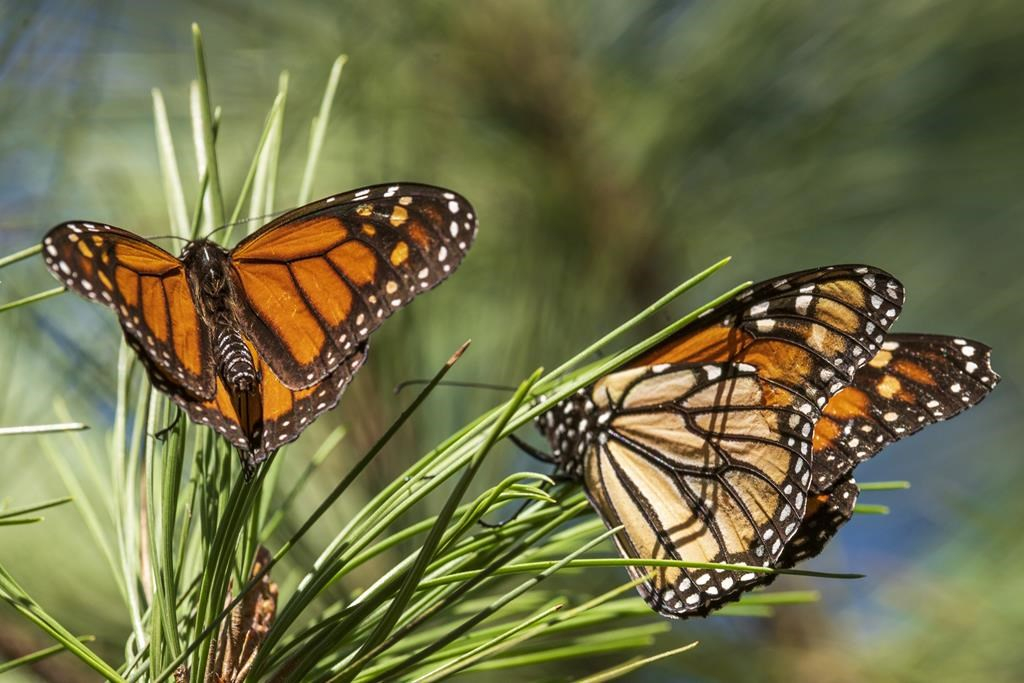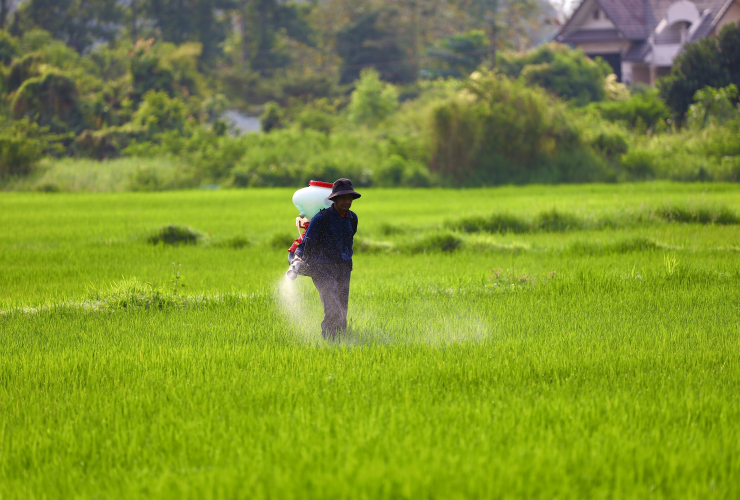Close your eyes for a moment and imagine a butterfly. My money says the fluttering insect you’re envisioning has black−veined, reddish−orange wings outlined with white specks — the iconic attributes of our beloved American monarch butterfly.
Unfortunately, the species, which populates many childhood memories, is in trouble.
The migrating monarch butterfly was added last week to the “red list” of threatened species and categorized as “endangered” for the first time by the International Union for the Conservation of Nature. That’s two steps from extinct in the wild.
Scientists blamed the monarchs’ plummeting numbers on habitat loss, climate change, and pesticide and herbicide use.
What can home gardeners do to support the monarch?
If everyone reading this planted one milkweed plant, the benefit would be palpable. Milkweed (Asclepias spp.) is the only plant monarch caterpillars eat, and it’s where the adult butterflies lay their eggs. Without it, the species simply could not exist.
“But not all milkweed is the same,” says Dawn Rodney, chief innovation and growth officer at the National Wildlife Federation in Reston, Virginia. For instance, “there is an invasive species called tropical milkweed (Asclepias curassavica) that we’re seeing more and more, and people are not understanding that it does more harm than good.”
The non−native plant is problematic because it blooms for longer and, in temperate regions, does not die back. That can prevent butterflies from recognizing when it’s time to migrate, and it can spread deadly parasites to the next year’s generation of caterpillars.
To choose the right milkweed, use the National Wildlife Federation’s Native Plant Finder ( https://www.nwf.org/nativeplantfinder/ ).
Adult monarchs need other plants too, specifically ones with nectar−bearing flowers. The National Wildlife Federation also has a Monarch Nectar Plant List tool ( https://www.nwf.org/Garden−for−Wildlife/About/Native−Plants/Monarch−Nectar−Guides ), developed with Monarch Joint Venture and Xerces Society, to find plants appropriate for your location.
Choose plants native to your region for the highest−quality food source. Be sure to include late−season bloomers to provide monarchs with fuel for their annual fall migration.
Knowing the source of the plants you buy is important, too.
“There are a lot of growers that use different types of chemicals that are harmful to wildlife,” Rodney said, referring to pesticides and herbicides intended to keep plants attractive on retail shelves. When you bring treated plants home, and butterflies lay eggs on them, the caterpillars that follow will die when they munch the leaves.
Neonicotinoid pesticides are especially harmful to the species, Rodney said, as they can kill bees and adult butterflies that ingest the toxic pollen and nectar of treated plants.
Since treated plants aren’t labeled as such, Rodney advises asking garden center staff about their pest−management practices. Buying only from trusted, organic sources or growing your own plants from seed are other good options.
This brings me to pesticide use in the home garden. When we use chemicals on our plants, we accept beneficial insects, including monarchs, as collateral damage. We also endanger birds that eat those poisoned insects.
Even natural and organic pesticides can harm butterflies and other pollinators. But if you must use such a product, stick with insecticidal soaps, horticultural oils or Neem oil, and apply them only after dusk, when pollinators aren’t active. Unlike many synthetic chemicals, these products lose their effectiveness when dry, so the butterflies will be safer by morning.
Finally, consider going the extra mile by setting up a butterfly puddling station: Create a mud puddle (or add water to sand) in a sunny spot of the yard and set a flat stone within it. Butterflies will sun themselves on the stone to raise their temperatures, and will sip water from the puddle to supplement their nectar diets with the salts, vitamins and minerals they need.
And please, for the love of
And please, for the love of all things gardening, break off the seed heads before they pop open. Your neighbours will not curse you.
It's all well and dandy to plant the things, but please make it so they grow in your own garden, not all across the block. If you love them, and want more than just the one, just be patient. They propagate by underground rhizomes, as well as by seed.
Better yet, plant them in a big pot or tub: that way, when it sinks in that they are actually all on their own invasive, you'll not have to tear up your entire garden, going down in some cases more than 2 feet, to keep them from crowding out your perennials.
I let them grow now almost 30 years ago, when my primary-schooler was introduced to the plight of the monarchs. It took about 5 years to finally clear them out, and the following year was the one and only one year since have they not invaded my entire yard, for which I blame David Suzuki and his lack of including in his instructions to Monarch Savers the small piece about keeping them from seeding your neighbours vegetable and berry patches.
If you get them full and still green and pliable, you can snip the end off, pop it like a pod of peas, and carefully lift out the seed package before scraping off the seeds with your thumbnail or the back of a paring knife, to separate them from the fluff, which is readily removed from the husk (do it outside on a still day, in a sheer cloth bag, so you don't have milk weed silk clinging to everything in the house.
The silk was used in I believe it was WW2, to stuff life-vests. It's extraordinarily light-weight (lighter than down), water-proof, and apparently mold- and bug-proof as well. I have almost enough to stuff a quilt: all I need now is to make the other necessary parts of it!




Comments